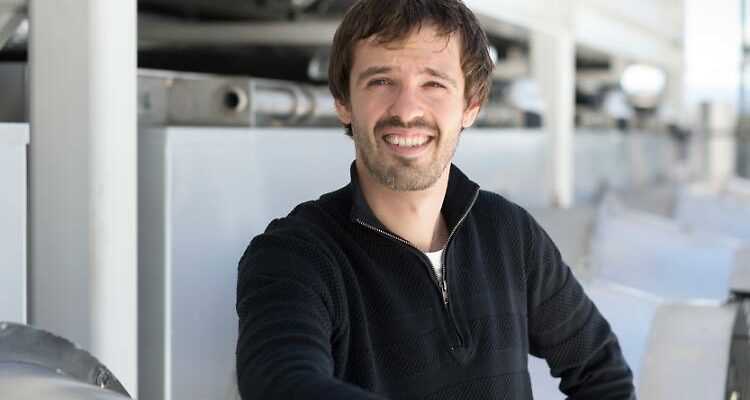Plant scrubs greenhouse gases
“We will take millions of tons of CO2 out of the air”
03/25/2022, 5:25 p.m
Climeworks builds plants that can scrub greenhouse gases out of the air and store them in the ground. Behind the success story are two Germans. In the podcast “The Zero Hour” they talk about their big plans.
It sounds like a mix between a miracle weapon and a washing machine, but it is a proven process: the Climeworks systems filter CO2 from the air, the technology is called “Direct Air Capture”. The Swiss company, backed by the Germans Jan Wurzbacher and Christoph Gebald, has managed to become one of the most important providers worldwide. Especially since the systems from Climeworks have a business model, even if the process is still quite expensive.
“It was clear to us from the start that our technology could be used on a very large scale,” said Jan Wurzbacher in the podcast “Zero Hour”. “Even before the company was founded, we were looking for the first applications and approached everything very commercially.” They asked themselves: Who needs CO2? It started with a greenhouse, then delivered to beverage producers. The gas is now being pumped into the ground as a service for customers like Microsoft and Audi.
In the machines, the air is sucked into a chamber by fans, the CO2 is caught by a kind of sponge – and then heated and separated. Jan Wurzbacher and Christoph Gebald researched the process during their studies at the ETH in Zurich. In 2009 they founded Climeworks.
They opened their first commercial project in 2017 in Hinwil, near Zurich. In 2021, Climeworks launched the first large facility in Iceland, called Orca, where the CO2 is stored directly in the ground. Orca is supposed to manage 4000 tons per year. At that time, it was the world’s largest facility for direct capture and storage from the air. Nevertheless, Climeworks has even more ambitious plans: “We are currently planning a system ten times as large,” said Wurzbacher. The location will be announced soon.
The Hamburg native reported that Climeworks is primarily working on two fronts: larger plants with better performance at lower costs. It’s no use just having prototypes, you always learn “out there in the field”. The plant in Iceland alone needs two years to really get up to speed. “That’s our strategy, to get plants up and running as quickly as possible, to determine what’s working well and what’s not working so well. And to do it as commercially as possible – so that we can get to million tons as soon as possible by the end of this decade and no more Thousands are coming.”
The demand is definitely there: “The last two years have felt like a ride on the exponential function,” said Wurzbacher. At around 500 euros per ton, the costs are currently still too high. You have to go down to 100 euros once. Wurzbacher expects that to take about ten to 15 years. By 2030, you could come to 200 to 300 euros per tonne of CO2.
The “Direct Air Capture Technology” is considered to complement the planned reductions in CO2 emissions and natural methods in which plants and trees store CO2. In order to reduce the approximately 40 billion tons of CO2 emissions that mankind emits every year, “about 10 billion tons of CO2 have to be extracted from the air every year from 2050,” said Wurzbacher. “It won’t be done by one company, it won’t be just one technology either.” Nevertheless, he is convinced that mankind “can get climate change under control with easily scalable technology”.
Also, listen in the new episode of “The Zero Hour“:
An interview with economist Jens Südekum about the dispute with Russia, which only wants to accept rubles for gas bills
All about the miraculous soaring of Berkshire Hathaway stock – did Warren Buffett get it right again?
All episodes can be found directly at AudioNow, Apple or Spotify or via Google.
